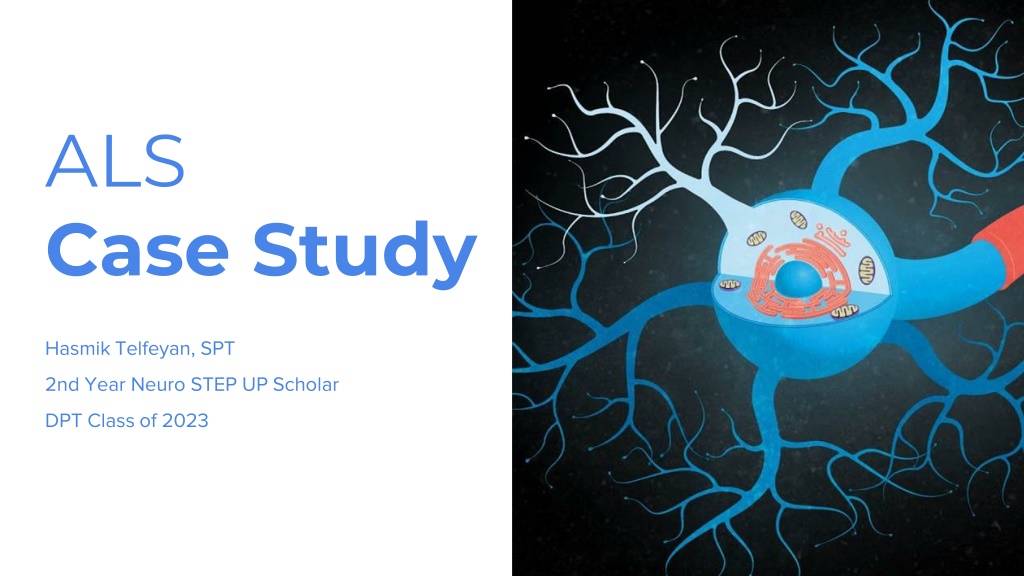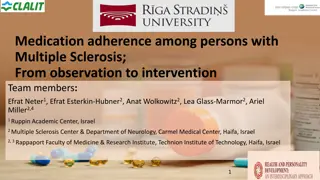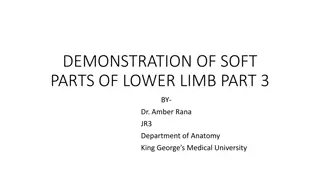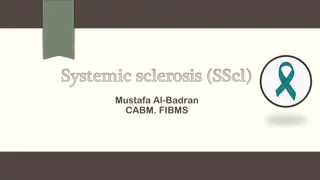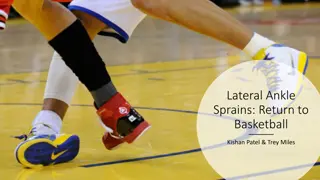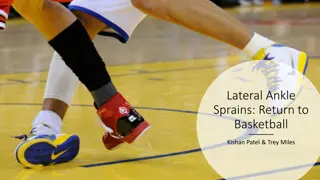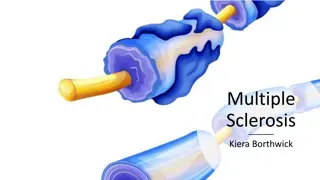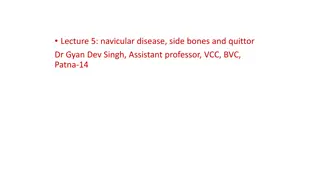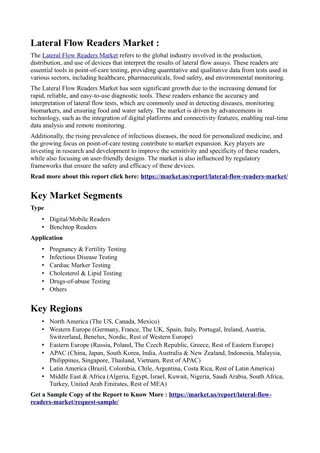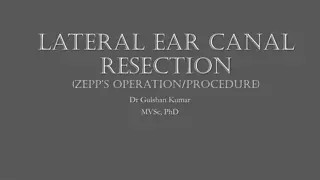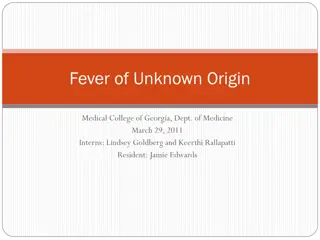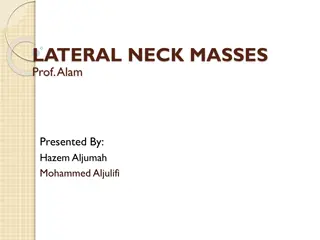Understanding Amyotrophic Lateral Sclerosis (ALS) and Case Study Analysis
Amyotrophic Lateral Sclerosis (ALS) is a progressive neurodegenerative disease affecting motor neurons, leading to muscle weakness and various symptoms. This case study focuses on Judy, a 52-year-old woman diagnosed with ALS, detailing her symptoms, progression, exercise routine, assistive device use, and home setup. The objectives include understanding ALS signs and symptoms, typical physical therapy care, outcome measures, and evidence-based interventions.
Download Presentation

Please find below an Image/Link to download the presentation.
The content on the website is provided AS IS for your information and personal use only. It may not be sold, licensed, or shared on other websites without obtaining consent from the author. Download presentation by click this link. If you encounter any issues during the download, it is possible that the publisher has removed the file from their server.
E N D
Presentation Transcript
ALS Case Study Hasmik Telfeyan, SPT 2nd Year Neuro STEP UP Scholar DPT Class of 2023
Objectives To understand common signs and symptoms of ALS Develop an understanding of a usual course of PT care for an individual with ALS To learn common outcome measures used for patients with ALS Identify and apply evidence-based interventions for individuals with ALS
What is Amyotrophic Lateral Sclerosis? Progressive neurodegenerative disease; loss of motor neurons which control voluntary muscles 90% of cases there is no known family history of the disease or presence of genetic mutation linked to ALS 5-10% of cases there is a known family history of disease Diagnosis Criteria
Common signs/symptoms Lower Motor Neuron Twitching - fasciculations Cramping Weakness with atrophy Rapidly progressive disease Eventually respiration is affected Relatively preserved sensation, cognition, extraocular control, bowel/bladder function Upper Motor Neuron Muscular stiffness Hyperreflexia Babinski reflex Patterns of Progression Focal weakness - arm, leg or bulbar Often asymmetrical, progresses from distal to proximal Bulbar Dysphagia Dysarthria
Meet Judy: Chart Review 52 year old female diagnosed with ALS in August 2020 Had back spasms for 5 years prior to diagnosis Initially noticed onset of R LE weakness, and R foot drop Currently taking baclofen and gabapentin for spasticity and nerve pain Hoffmans: present; Babinski: absent Last visit to ALS multidisciplinary clinic December 2023 3 months ago reported she is having more difficulty walking No other significant PMH or surgeries
Subjective Changes and symptom progression? Patient notices her R LE is weaker and her knees tend to buckle more She is having difficulty sleeping at night due to muscle spasms and pain She can transfer independently from her bed to her wheelchair, but requires assistance if she has been sitting for long periods of time No falls Exercise/stretching routine? Patient says she is more unmotivated to perform exercises and stretches, and she is experiencing a lot of fatigue She has a massage therapist come to her house once a week Assistive device use? Power chair for most mobility Rollator for household ambulation Off-the-shelf posterior AFO s In the process of getting custom solid AFO s Can t use slide board for transfers due to softness of Roho cushion Home set up? Single level house with ramp to enter Bathroom is accessible with power chair, able to shower independently in shower WC Goals? Activities? / ADL s? Retired school teacher No longer driving Able to do laundry, dishes, and chores around the house independently in her power chair To stand at her daughter's wedding To maintain independence with transfers To have regular PT visits at home
Primary vs. Secondary Fatigue Primary => caused by etiology Remaining neurons or sprouted neurons overburdened, weak muscles work at higher percentage of max strength which quickens muscle fatigue Secondary => Secondary to main symptoms and the toll the symptoms take on the body Sleep disturbances, respiratory impairments, hypoxia, depression, immobility
Objective Information ROM: R LE limited, especially hip flexion and DF Pain: Patient reports she always has pain, describes as burning and achy Worst: 8/10 Current: 2/10, mainly located in right hip and LE Spasticity: 1/4 MAS in B knee extensors; pt reports severe LE extensor tone especially at night and after resting for long periods of time Sit knees in standing with rolling walker Stand: Requires use of BUE, locks out MMT: UE: Grossly 5/5 LE: Hip Flexion: R: 2+/5; L:3-/5 Knee Extension: R: 3-/5; L: 4/5 Ankle Dorsiflexion: R: 1+/5; L: 3-/5 Standing Balance: Requires BUE use on walker to maintain standing; pt denied ambulation due to feeling of unsteadiness Endurance: Pt able to stand for 2 minutes before needing to sit
Outcome Measures ALS-Functional Rating Scale Function In Sitting Test Gait Speed
Function in Sitting Test https://www.sralab.org/sites/def ault/files/2017- 07/fist_score_sheet.pdf
Stages of ALS: Exercise Considerations Early: Safe enough to participate in most strengthening moderate intensity exercise pronounced fatigue and shortness of breath (SOB) with activity Middle: Adaptations for exercise Monitor for SOB Preferable to use stationary bike for aerobic over walking Closely monitor if over-extended/over-fatigued Late: ROM Pain management PROM with caregivers Breathing
Interventions Evidence suggests exercise can slow the decline of function and benefit an individual s quality of life Therapeutic Exercise Gait training Postural exercises/education Assistive device recommendations Patient/family education HEP
Multidisciplinary Clinic Recommendations Education TherEx Gait Training Stretching: Passive range of motion especially into dorsiflexion Ambulation with AFO s and rollator Exercise parameters: feelings of fatigue/weakness should not last more than 20- 30min after exercise Gait speed Aerobic Exercise: 10 minutes of recumbent cycling at 40-60% of HR reserve; recommended foot bike Ambulating on flat surfaces: recreate pt home environment to practice functional tasks Disease progression and what to expect Educate caregiver on how to assist with exercises Resistance Exercise: pt must have at least 3/5 in mm group; 3 sets of 5 reps targeting UE Education on positioning
Forum Questions Judy is starting home health therapy and you are her therapist. Write out a plan of care including what you would evaluate on the first visit, interventions you would implement, and 4-5 goals. Be sure to include frequency and duration of PT. What other assistive devices/assistive technologies would you expect Judy would need as her disease progresses? What resources would you provide to help her and her family? Use resources to support your response. As Judy continues to lose function, how would you change your interventions? Use evidence to support your response. Judy and her family are worried about her prognosis and how rapidly ALS can progress. Write out your response to them, and make sure to use resources to support your response.
References 1. 2. McCulloch, Karen. Amyotrophic Lateral Sclerosis. University of North Carolina at Chapel Hill. 2022 Causes of fatigue | MS Society. Accessed April 24, 2023. https://www.mssociety.org.uk/about-ms/signs-and- symptoms/fatigue/causes-of-fatigue Gordon PH, Miller RG, Moore DH. ALSFRS-R. Amyotroph Lateral Scler Other Motor Neuron Disord. 2004;5 Suppl 1:90- 93. doi:10.1080/17434470410019906 Function in Sitting Test | RehabMeasures Database. Accessed April 24, 2023. https://www.sralab.org/rehabilitation- measures/function-sitting-test Kalron A, Mahameed I, Weiss I, et al. Effects of a 12-week combined aerobic and strength training program in ambulatory patients with amyotrophic lateral sclerosis: a randomized controlled trial. J Neurol. 2021;268(5):1857-1866. doi:10.1007/s00415-020-10354-z Bello-Haas VD, Florence JM, Kloos AD, et al. A randomized controlled trial of resistance exercise in individuals with ALS. Neurology. 2007;68(23):2003-2007. doi:10.1212/01.wnl.0000264418.92308.a4 3. 4. 5. 6.
